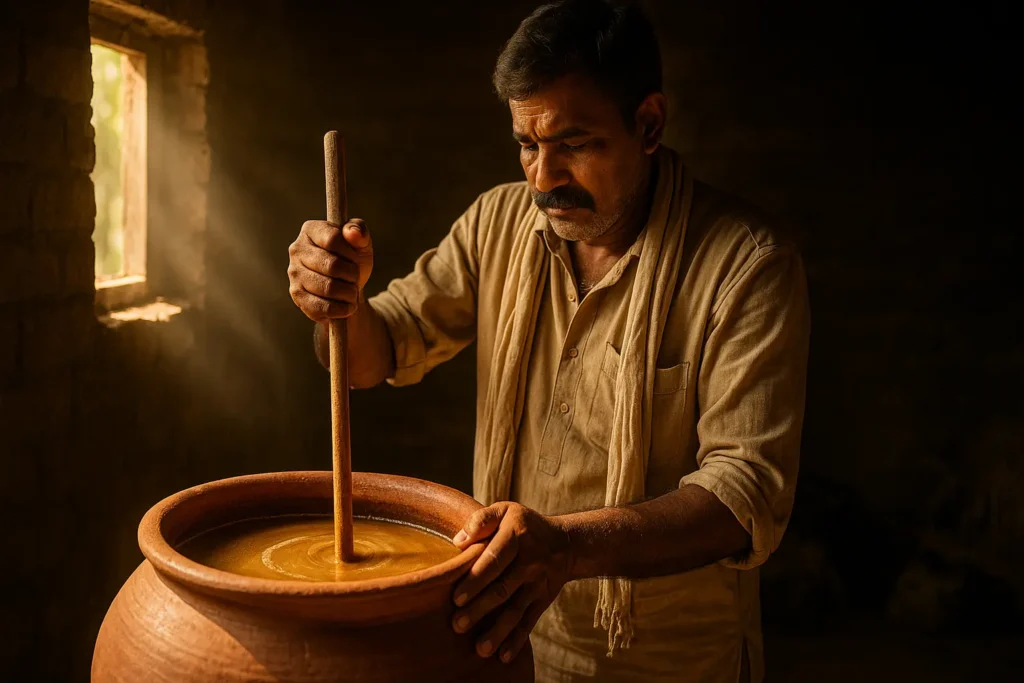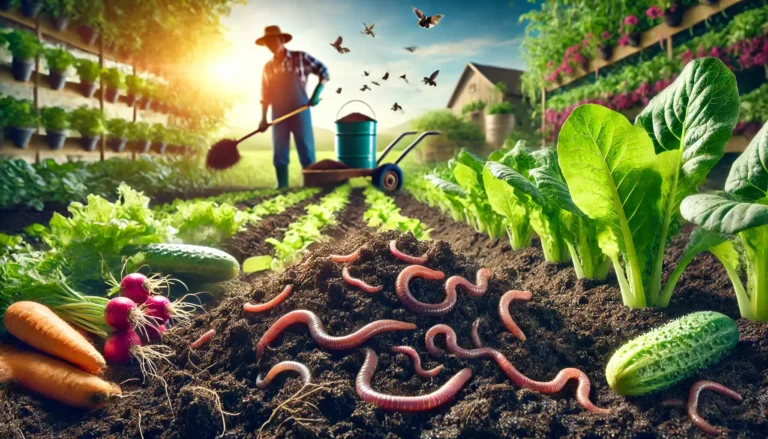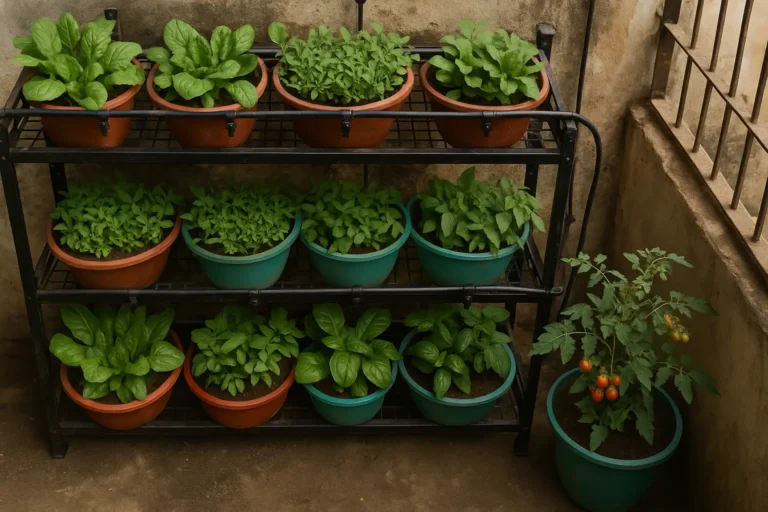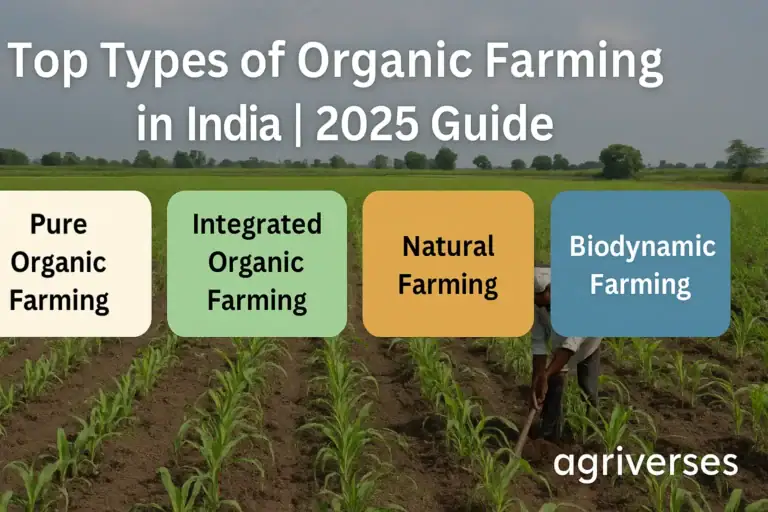I still remember the smell of the earth after the first monsoon shower in my grandfather’s village. That smell, they call it petrichor, is the smell of life itself. But over the years, I’ve seen many of our kisaan bhai (farmer brothers) struggle. The rising cost of chemical fertilizers and pesticides pinches the pocket, while the unpredictable weather can break one’s spirit. The very soil that once gave life now feels tired.

This is the problem so many of us face. But the solution isn’t in more chemicals; it’s in returning to a wiser way of farming. This article will break down the practical methods of organic farming—the ‘how-to’ that makes this philosophy a powerful, profitable reality.
Why Methods Matter in Organic Farming
Many people think organic farming is simple: just stop using chemicals. But that’s like saying to build a strong house, you just have to stop using weak bricks. It’s not about what you remove, but what you add and do instead. The philosophy is the ‘why’, but the methods are the ‘how’.
These methods are the backbone of a successful organic farm. They are not just individual tasks but parts of a single, living system. Think of your farm as a body. Crop planning is the brain, soil health is the heart, and pest control is the immune system. For the body to be healthy, all parts must work together. This is why understanding the core methods of organic farming is non-negotiable for anyone serious about creating a farm that is both sustainable and self-reliant. It’s about building a partnership with nature, not fighting against it.
Key Methods with Examples: The Heart of the Practice
Let’s get our hands dirty and explore the specific techniques that breathe life into an organic farm. These aren’t just theories from a book; these are time-tested practices that I have seen transform barren lands into thriving ecosystems right here in India.
1. Crop Rotation: The Smart Way to Confuse Pests and Feed the Soil

Crop rotation is one of the foundational methods of organic farming, and it’s pure genius. In simple terms, it means not planting the same crop in the same place year after year.
Imagine you are a pest that loves to eat potatoes. If a farmer plants potatoes in the same field every single season, it’s a permanent buffet for you and your family! You’ll multiply and thrive. But if next season, the farmer plants marigolds (which you hate), followed by beans (which you can’t eat), your life cycle is broken. You either starve or move on.
The Science Made Simple: Different plants have different needs and give back different things to the soil.
- Heavy Feeders like maize, wheat, or cotton take a lot of nutrients, especially nitrogen.
- Light Feeders like root vegetables (carrots, onions) need fewer nutrients.
- Soil Builders are the heroes. These are legumes like moong, chana (chickpea), or dhaincha (sesbania). They have a magical ability, thanks to Rhizobium bacteria in their root nodules, to capture nitrogen from the air and fix it in the soil for free!
A common rotation in North India is wheat-paddy. A smart organic farmer might introduce a summer crop of moong dal in between. This not only provides a third source of income but also naturally enriches the soil with nitrogen, reducing the need for fertilizer for the next wheat crop.
2. Green Manuring: Ploughing Life Back into the Soil
This method is like a spa treatment for your farm’s soil. Green manure crops are fast-growing plants, typically legumes like Dhaincha, Sunn Hemp (Sanai), or pulses, that are grown specifically to be ploughed back into the soil while they are still green.
They are not grown to be harvested. Their entire purpose is to decompose and become food for the soil. When you cut them and mix them into the earth, they release valuable organic matter and trapped nutrients. This improves the soil’s structure, making it better at holding water—a huge advantage in our water-scarce regions. According to research bodies like the Indian Council of Agricultural Research (ICAR), green manuring can significantly improve soil fertility and reduce dependence on external inputs.
3. Composting & Vermicomposting: Creating Black Gold from Waste

Every Indian village has a treasure trove of potential wealth that often goes to waste: cow dung (gobar), crop residues, kitchen scraps, and fallen leaves. Composting is the art of turning this “waste” into “black gold”—rich, dark, nutrient-dense manure.
Traditional Composting involves piling this organic matter, keeping it moist, and turning it regularly to allow microbes to break it down. It’s a slow, natural process.
Vermicomposting is composting on steroids. Here, we employ an army of tiny, tireless workers: earthworms. Species like Eisenia fetida eat the organic waste and excrete it as “vermicast.” This worm manure is one of the most nutrient-rich organic fertilizers you can find. It’s packed with not just NPK (Nitrogen, Phosphorus, Potassium) but also essential micronutrients and beneficial microbes. Starting a vermicompost pit is a simple, low-cost way for any farmer to create their own high-quality fertilizer.
4. Biological Pest Control: Recruiting Nature’s Army

In chemical farming, the first sight of a pest sends a farmer running for the spray pump. In organic farming, we ask a different question: “Where are the pest’s enemies?”
Nature is all about balance. For every pest that eats your crop, there is another insect or bird that eats that pest. Biological pest control is about encouraging these “friendly” predators.
- Encourage Birds: Planting trees for birds to perch on can help. A single bird can eat hundreds of insects a day.
- Introduce Predators: Ladybugs are voracious eaters of aphids. Praying mantises and spiders are general predators that help keep pest populations in check.
- Use Plant-Based Repellents: Solutions like Neemastra (made from neem leaves and seeds), Agniastra (chilli-garlic spray), and fermented buttermilk sprays can repel pests without harming the soil or beneficial insects. These are ancient Indian techniques that work wonderfully.
5. Mixed Cropping & Intercropping: A Safety Net of Diversity
Nature never plants a single crop in a vast area. A forest has hundreds of species living together. Mixed cropping and intercropping try to mimic this natural wisdom.
- Mixed Cropping: Growing two or more crops together in the same field without any set row pattern. For example, broadcasting wheat and mustard seeds together.
- Intercropping: Growing two or more crops in a definite row pattern. A classic example is planting rows of cotton with rows of moong dal in between.
This approach has multiple benefits. If one crop fails due to a specific pest or disease, the other crop still provides an income. It creates biodiversity, which confuses pests. Furthermore, pairing a tall crop with a shorter, shade-loving one ensures maximum use of sunlight. It’s a beautiful system of mutual support.
6. Mulching: The Soil’s Protective Blanket
Walk into a forest. The ground is never bare; it’s always covered with a layer of fallen leaves. This is nature’s mulch. We can do the same on our farms.
Mulching is simply covering the soil around your plants with a layer of organic material—like straw, sugarcane trash, leaves, or grass clippings.
- It Saves Water: The mulch layer acts like a cap on a water bottle, drastically reducing evaporation from the soil surface. I’ve seen farmers cut their irrigation needs by half just by mulching.
- It Controls Weeds: By blocking sunlight, mulch prevents many weed seeds from germinating.
- It Feeds the Soil: As the mulch slowly decomposes, it adds organic matter and nutrients to the soil.
7. Rainwater Harvesting & Water Conservation
Organic farming is deeply connected to water wisdom. A farm that relies on nature’s cycles must also learn to value every drop of rain. Techniques like creating farm ponds (khet talab), contour bunds, and trenches help capture rainwater and allow it to percolate into the ground, recharging the water table. The improved soil structure from organic practices also means the land acts like a sponge, holding water for much longer. As stated by government initiatives like the Pradhan Mantri Krishi Sinchayee Yojana (PMKSY), integrated water management is crucial for agricultural sustainability.
8. Use of Jeevamrut & Beejamrut: The Indian Microbial Elixir

These two concoctions are at the very soul of many Indian organic farming systems, especially Zero Budget Natural Farming (ZBNF). These bio-inputs are powerful methods of organic farming unique to our subcontinent.
- Beejamrut (Seed Treatment): This is a treatment for seeds before sowing. A mixture of cow dung, cow urine, lime, and a handful of soil, it inoculates the seeds with beneficial microbes and protects them from soil-borne diseases during their vulnerable germination phase.
- Jeevamrut (Soil Tonic): This is a fermented microbial culture that is nothing short of a life tonic for the soil. Made from cow dung and urine from a desi cow, jaggery, gram flour, and soil, it is a powerhouse of countless beneficial microorganisms. When applied to the soil, these microbes get to work, unlocking nutrients and making them available to the plants. It’s not a fertilizer in the chemical sense; it’s a catalyst that restarts the natural nutrient cycle in the soil.
While these are the methods, it’s also helpful to understand the different types of organic farming systems they fit into, as each has a slightly different focus.
A Greener, Smarter Rural Future
So, where do we go from here? Embracing these methods of organic farming is more than just a farming choice; it’s a vision for an aatmanirbhar (self-reliant) and resilient rural India.
For the smallholder farmer, this is a path out of the vicious debt cycle of buying expensive inputs. It’s about reducing the cost of cultivation and increasing the health of the one asset that truly matters: the land. When a farmer makes his own fertilizer from compost and his own pesticide from neem, he is no longer just a producer; he is an innovator. He is the master of his own farm.
This is not about going back in time. It’s about moving forward with wisdom. It’s about blending the deep ecological knowledge of our ancestors with a modern scientific understanding of soil biology. The future of Indian agriculture lies in empowering our Annadatas (food providers) to become guardians of biodiversity and stewards of the soil. By adopting these methods, they are not just growing crops; they are cultivating a healthier future for their children and for our nation.
Call-to-Action: If this article added value to your understanding, please consider sharing it with a fellow farmer, an agriculture student, or anyone passionate about the future of our food. Let’s grow this conversation together.







One Comment